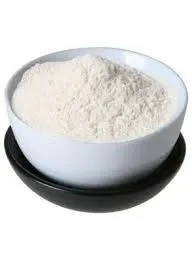
nov. . 16, 2024 10:09 Back to list
what is hydroxypropyl methyl cellulose
What is Hydroxypropyl Methyl Cellulose?
Hydroxypropyl Methyl Cellulose (HPMC) is a semi-synthetic polymer derived from cellulose, a natural polymer found in the cell walls of plants. HPMC is a colorless, odorless, and tasteless ingredient that is widely used in various industries, including food, pharmaceuticals, cosmetics, and construction. It belongs to a class of substances known as cellulose ethers, which are modified cellulose compounds created to enhance certain properties of the original cellulose.
Chemical Structure and Properties
The chemical structure of HPMC consists of hydroxypropyl and methyl groups added to the cellulose backbone, altering its solubility and functional characteristics. The degree of substitution of these groups can vary, leading to different grades of HPMC, which have various properties such as viscosity, solubility, and film-forming ability. HPMC is soluble in cold water, forming a clear, viscous solution. This property makes it a valuable additive in many applications, offering thickening, suspending, and emulsifying capabilities.
Applications of HPMC
1. Food Industry In the food sector, HPMC serves as a thickening agent, stabilizer, and emulsifier. It is often found in sauces, dressings, and dairy products to improve texture and mouthfeel. Its ability to retain water also helps in maintaining the freshness of food products.
2. Pharmaceuticals HPMC is extensively used in pharmaceutical formulations. It is utilized as a binder in tablet formulations to enhance the controlled release of active ingredients. Additionally, HPMC is an essential component in many ophthalmic solutions and contact lens materials, owing to its viscosity and lubricating properties.
what is hydroxypropyl methyl cellulose

3. Cosmetics and Personal Care In the cosmetics industry, HPMC is employed in products like lotions, creams, and gels for its thickening and stabilizing properties. Its ability to create a smooth texture makes it a popular choice for enhancing the feel and application of cosmetic products.
4. Construction HPMC is used as an additive in cement, gypsum, and other building materials. It improves workability, adhesion, and water retention in plaster and mortar, making it crucial for construction processes.
Safety and Regulatory Status
HPMC is considered safe for use by various regulatory bodies, including the Food and Drug Administration (FDA) and the European Food Safety Authority (EFSA). It is classified as a Generally Recognized As Safe (GRAS) substance, which means it can be used in food products without requiring pre-market approval. However, as with any additive, it is essential to adhere to recommended usage levels to avoid potential adverse effects.
Conclusion
In summary, Hydroxypropyl Methyl Cellulose is a versatile and widely utilized compound with applications spanning multiple industries. Its unique properties, such as water solubility, viscosity, and film-forming ability, make it an invaluable ingredient in food, pharmaceuticals, cosmetics, and construction materials. As the demand for natural and safe additives continues to rise, HPMC stands out as a reliable option that meets modern consumer and industry needs, further solidifying its place in a variety of products we encounter in our daily lives. Whether as a thickening agent in a beloved sauce or a binder in a medication, HPMC plays a critical role in enhancing the quality and performance of numerous formulations.
-
Versatile Hpmc Uses in Different Industries
NewsJun.19,2025
-
Redispersible Powder's Role in Enhancing Durability of Construction Products
NewsJun.19,2025
-
Hydroxyethyl Cellulose Applications Driving Green Industrial Processes
NewsJun.19,2025
-
Exploring Different Redispersible Polymer Powder
NewsJun.19,2025
-
Choosing the Right Mortar Bonding Agent
NewsJun.19,2025
-
Applications and Significance of China Hpmc in Modern Industries
NewsJun.19,2025







